
Filter News
Area of Research
- Advanced Manufacturing (4)
- Biological Systems (1)
- Biology and Environment (119)
- Biology and Soft Matter (1)
- Computational Biology (1)
- Computational Engineering (1)
- Energy Science (88)
- Fusion and Fission (7)
- Isotopes (22)
- Materials (66)
- Materials for Computing (9)
- National Security (14)
- Neutron Science (99)
- Nuclear Science and Technology (8)
- Quantum information Science (1)
- Supercomputing (92)
News Type
News Topics
- (-) Bioenergy (93)
- (-) Biology (106)
- (-) Composites (23)
- (-) Environment (154)
- (-) Frontier (60)
- (-) Isotopes (53)
- (-) Molten Salt (5)
- (-) Neutron Science (136)
- (-) Summit (62)
- 3-D Printing/Advanced Manufacturing (104)
- Advanced Reactors (24)
- Artificial Intelligence (112)
- Big Data (53)
- Biomedical (59)
- Biotechnology (35)
- Buildings (45)
- Chemical Sciences (70)
- Clean Water (18)
- Computer Science (174)
- Coronavirus (36)
- Critical Materials (16)
- Cybersecurity (31)
- Education (5)
- Element Discovery (1)
- Emergency (3)
- Energy Storage (75)
- Exascale Computing (64)
- Fossil Energy (7)
- Fusion (54)
- Grid (48)
- High-Performance Computing (113)
- Hydropower (6)
- ITER (6)
- Machine Learning (50)
- Materials (111)
- Materials Science (111)
- Mathematics (8)
- Mercury (9)
- Microelectronics (4)
- Microscopy (40)
- Nanotechnology (46)
- National Security (78)
- Nuclear Energy (94)
- Partnerships (67)
- Physics (60)
- Polymers (22)
- Quantum Computing (48)
- Quantum Science (79)
- Security (28)
- Simulation (52)
- Software (1)
- Space Exploration (16)
- Statistics (3)
- Transportation (56)
Media Contacts

Systems biologist Paul Abraham uses his fascination with proteins, the molecular machines of nature, to explore new ways to engineer more productive ecosystems and hardier bioenergy crops.
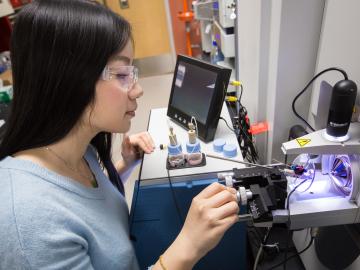
Scientists at Oak Ridge National Laboratory and Ohio State University discovered a new microbial pathway that produces ethylene, providing a potential avenue for biomanufacturing a common component of plastics, adhesives, coolants and other
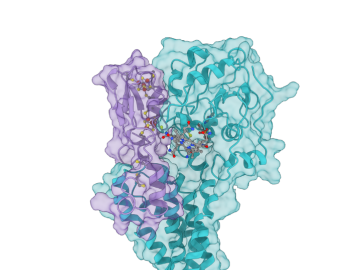
A team led by ORNL created a computational model of the proteins responsible for the transformation of mercury to toxic methylmercury, marking a step forward in understanding how the reaction occurs and how mercury cycles through the environment.
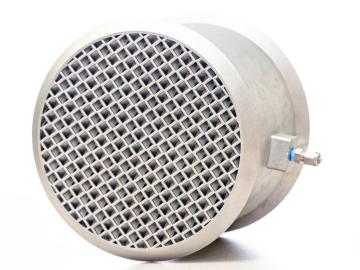
Oak Ridge National Laboratory researchers have designed and additively manufactured a first-of-its-kind aluminum device that enhances the capture of carbon dioxide emitted from fossil fuel plants and other industrial processes.
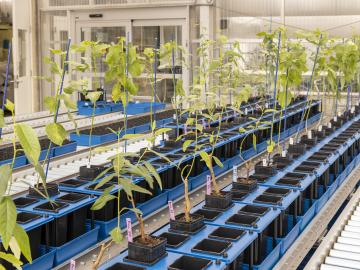
Scientists at the Department of Energy’s Oak Ridge National Laboratory have a powerful new tool in the quest to produce better plants for biofuels, bioproducts and agriculture.

Pick your poison. It can be deadly for good reasons such as protecting crops from harmful insects or fighting parasite infection as medicine — or for evil as a weapon for bioterrorism. Or, in extremely diluted amounts, it can be used to enhance beauty.
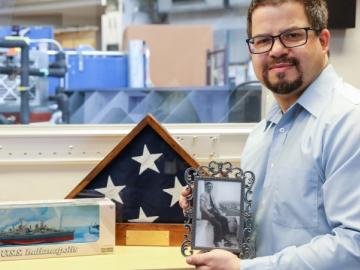
The 75th anniversary of the final voyage of the USS Indianapolis and her brave crew is Thursday, July 30. The US Navy warship was on a top-secret mission across the Pacific Ocean to deliver war materials that marked the conclusion of the Manhattan Project.

After its long journey to Mars beginning this summer, NASA’s Perseverance rover will be powered across the planet’s surface in part by plutonium produced at the Department of Energy’s Oak Ridge National Laboratory.

A team led by Dan Jacobson of Oak Ridge National Laboratory used the Summit supercomputer at ORNL to analyze genes from cells in the lung fluid of nine COVID-19 patients compared with 40 control patients.

Scientists at Oak Ridge National Laboratory have demonstrated a direct relationship between climate warming and carbon loss in a peatland ecosystem.


